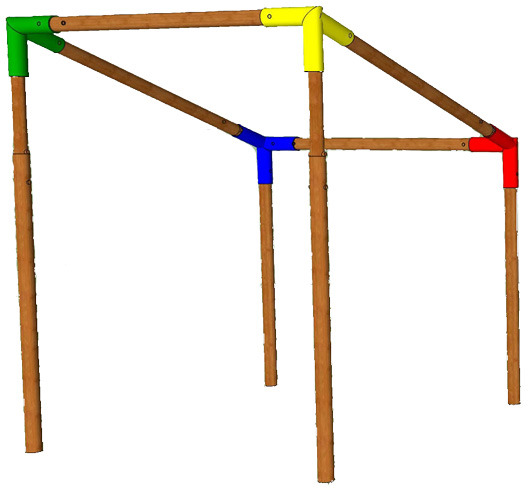Privacy Tent for Haiti
 Sunday, February 17, 2013 at 7:50AM
Sunday, February 17, 2013 at 7:50AM  Vetiver Plant Provides Breathable Wall For Comfort
Vetiver Plant Provides Breathable Wall For Comfort
This deployable unit was to be used to secure medicine and food prior to distribution. The materials this tent was to be made from would include locally sourced bamboo and vetiver plants. Jobs could then be created in cultivation and processing of these sustainable raw materials into fabric and the proper dimensions. Paint would have would have provided direction with matching colors serving as an international language. Metal corners fabricated in a more industrialised country would provide rigidity to winds and decrease the time required to assemble the structure. The deployment of this structure would primarily be in response to natural disasters where food and light medical attention are critically needed. Regular usage of this package could benefit those living in more isolated area's where aid is more scarce. These units are meant to be staffed by the people of Haiti allowing them to provide for themselves and provide for their own relief. This would be an empowering element to the local people and promote education through increased communication.
 Basic Instruction on Assembly
Basic Instruction on Assembly
During the development of this project I realized that sustainable aid to Haiti can best be accomplished by educating and empowering the local people. Promoting basic ideas of sanitation and reinforcing those ideas with proper leadership could do much for the people of Haiti. Due to the actions of irresponsible aid workers new and deadly viruses have been introduced to Haiti. If local peoples had been given an education on the basic kinds of care that can be sustainable provided in Haiti and then dispatched to carry out that care new foreign disease might not be introduced.
Key elements of a hospital design should include education, local material to stimulate the economy, and geographic awareness to provide patients with comfort.
 Assembly,
Assembly,  Awareness,
Awareness,  Economy,
Economy,  Education,
Education,  Emmie Corgan,
Emmie Corgan,  Erin Brelsford,
Erin Brelsford,  Stephen Shepherd
Stephen Shepherd 


